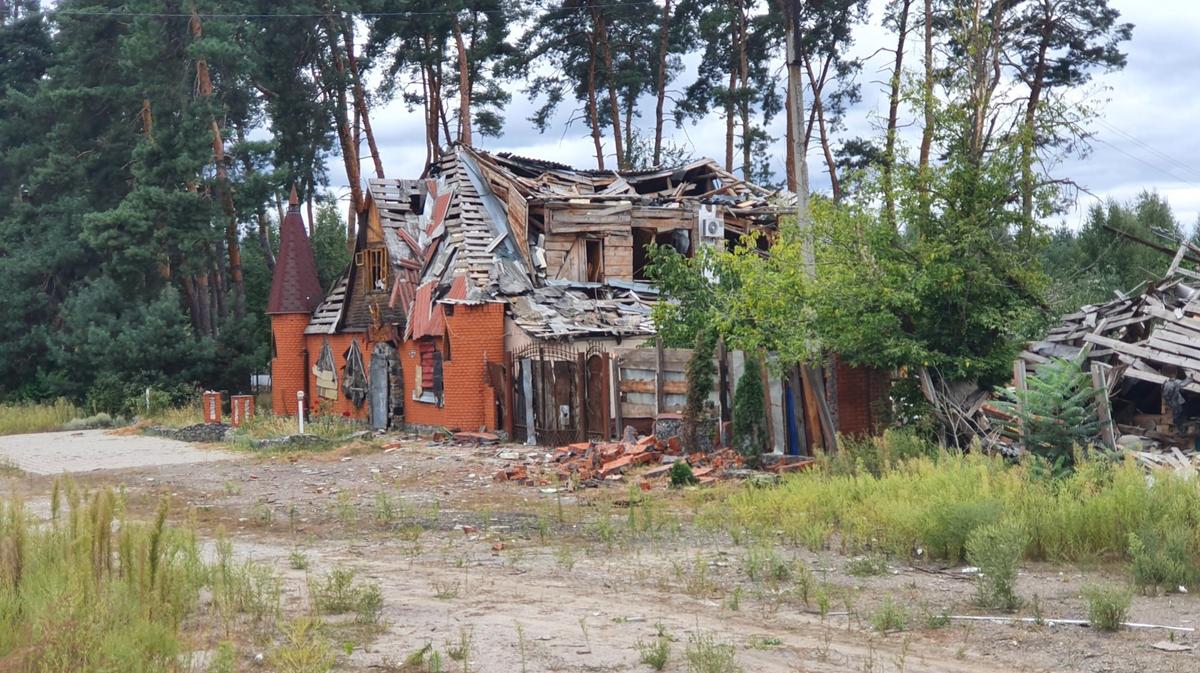I met with Mayor of Sumy, Oleksandr Lysenko, in a big meeting room. The man was very friendly and down to earth. He told me I could ask him anything, even the “difficult” questions.
At first, the mayor talked a little about Sumy. The city is located in the north-east of Ukraine, close to the Russian border. Before the escalation of the war, the city had about 260,000 residents, and contrary to Western beliefs, even this place far away from Kyiv has its own advanced industrial background. An Italian factory makes specialised gas and oil equipment, a Polish factory makes big pumps for urban water supply. There are also paint and chemical factories located in the city. The chemical plant was attacked by the Russian forces, however, the paint factory has been operating the entire time, even during the siege of the city. There is also a well known Sumy university, a lot of students of which are from Asia and Africa. The vast majority of people here speak Russian, in the characteristic Ukrainian dialect.
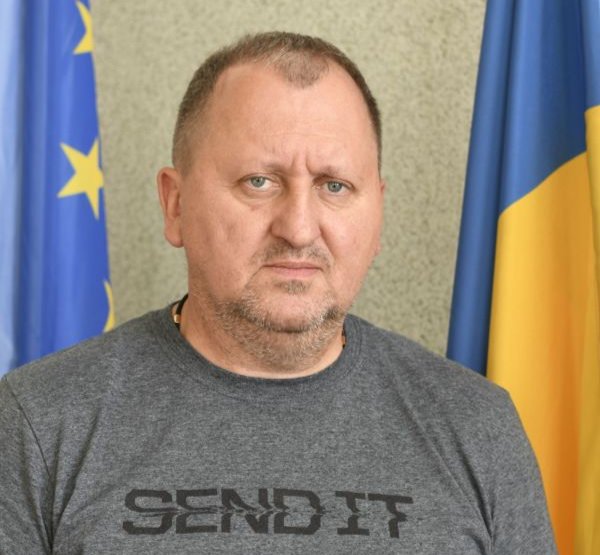
Oleksandr Lysenko, Mayor of Sumy. Photo: Jens Alstrup
I arrived in the city on a motorcycle. On the way to Sumy, I saw both completely destroyed villages and untouched ones. It seems there was no apparent logic to the shelling. To sum up, this area was a witness to the war’s chaos, something that few people realise, at least outside of Ukraine.
The day before I met with the mayor, I had a long talk with Bohdan, a young IT specialist. He told me about the first day of the war: he felt hopeless and abandoned. Even the local police were ordered to evacuate to the west of the country, while the Ukrainian army was nowhere to be seen. The very first Russian regiments to invade the country did not even make a stop in Sumy, they passed deeper into Ukraine before they were discovered. When the Kyiv government asked the Sumy authorities about the Russian troops, they said they knew nothing about them.
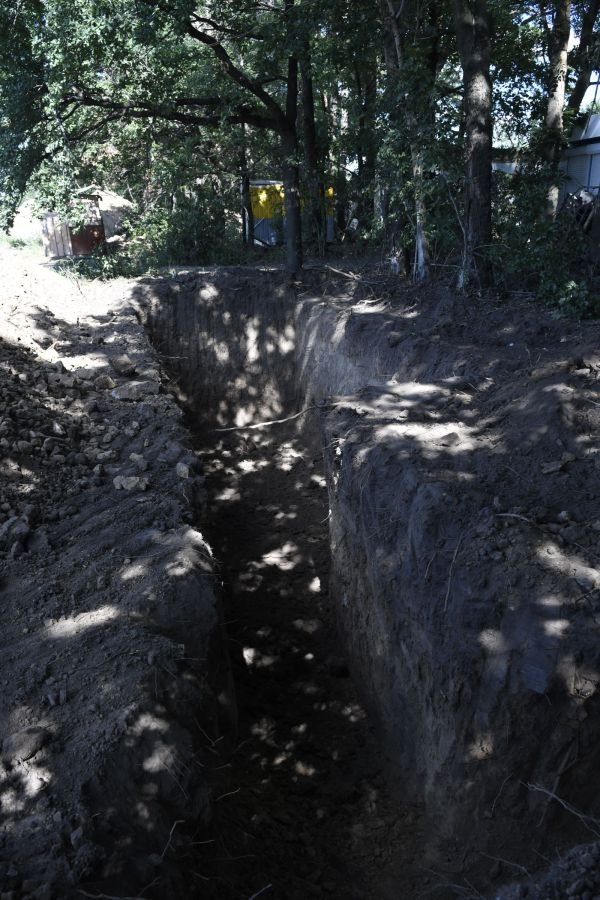
Trench ready to be used, in case the Russian troops appear near the fields. Photo: Jens Alstrup
The next formations of the Russian forces did not just pass without notice. Ihor Ganenko a political prisoner in Kyiv during the Euromaidan revolution, managed to get access to weapons in Sumy on 24 February. He and a band of volunteers met the Russian soldiers in the city. The Russians were even so polite that they stopped before the red lights. Maybe they thought that they would be met with salt and bread. They gave Ganenko’s band a chance to attack. Then, the Russians left the city. What Ganenko and his group did not know until later was that, two streets away, there stood Russian tanks. He later admitted that it was a good thing that they didn’t know, seeing as they only had light weapons and it would have been suicide to attack the Russian tanks. But had they known, they still would have done it. It all kind of came to an abrupt end, as the Russian troops did not seem to have a direct order to occupy the city, and they retreated. The Russian forces dug trenches outside of Sumy, and in reality, the city was under siege from the first day of the full scale war.
The Russian army did not try very hard to capture the city. They could have done it, if they really wanted to. There were clashes in the area, and the city was shelled. The paint and chemical factories were hit. The power and heating infrastructure got damaged. But the city itself did not get seriously damaged. Still, the siege was a tough time, Bohdan told me. There were constant alarms, and food began to disappear from the shops. After some time, there was an agreement to establish a humanitarian corridor, through which the United Nations were able to deliver food aid. Bohdan participated in the distribution of the aid. He remembers it as a moment of unity and relief. They were, after all, not forgotten by the world.
The mayor faced a difficult task. It was winter, and not having neither heating nor power was a serious challenge. For the most fragile, it could even be a question of life or death. They did manage to make the utilities work again, and they had enough energy to keep them running. I suppose it was fueled with gas. In the hopes not to attract new attacks, the mayor hid the fact that they were fixed, and he appealed to the population not to turn on lights during night time, as most of Europe had done during World War II, to pretend they were without electricity. Whether the trick worked or the Russians just lost interest, it is difficult to say, but the important thing was that the power and heating continued to be turned on, and the mayor did a great job of protecting his city.
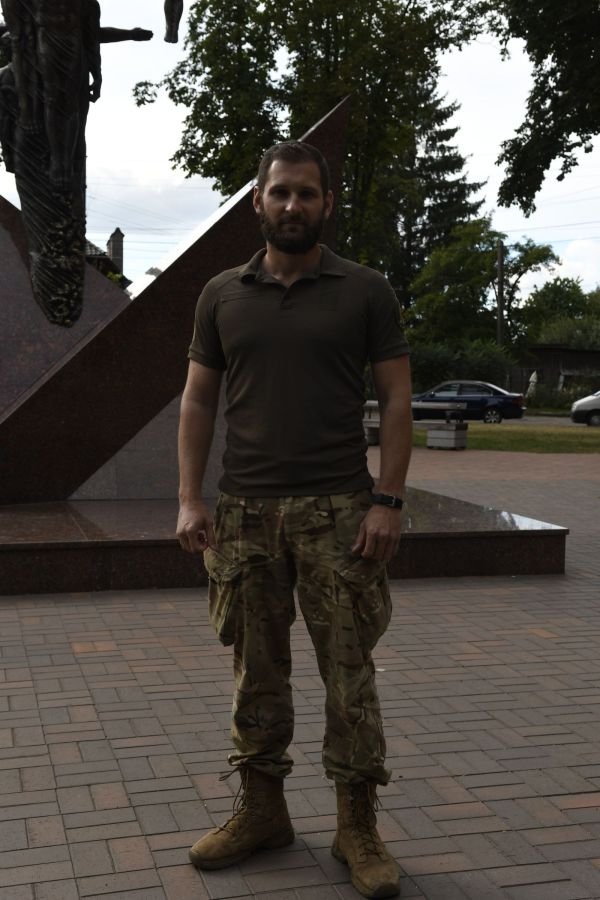
Ihor Ganenko, war hero and former political prisoner. Photo: Jens Alstrup
Ihor Ganenko and other volunteers became more and more organised, and military education was arranged. Weapons became more available. Sumy was under siege, but the number of Russian soldiers that surrounded the city was not big enough to make the siege impenetrable. Across the region, paramilitary groups had great success. All the destroyed Russian armoured vehicles that were displayed during the Ukrainian Independence Day parade in Kyiv were found in the Sumy region. There is no doubt that the Russian army faced heavy losses in the region, because of the Javelins and Bayraktars. During that period, it was also a very mobile war. In the early stage of the conflict, the regular Ukrainian army was managing to advance no less than 70 km per day. Many didn’t believe this fact at all, but it was true, though an important part of this truth is that they did not meet a lot of resistance on their way. Some villages never saw a Russian soldier enter their territory. Others were occupied.
This chaos was to the advantage of the army that had the support of the local population. Surely, this area was not the most important in the terms of the Russian retreat from the north of Ukraine, but it was certainly a part of it, and when the Russians lifted the siege of Sumy and left the area at the beginning of April, the happiness could be felt in the air. Ihor Ganenko left the home volunteer group and became part of the Ukrainian AK47 assault troops, an elite unit, and the paramilitary groups of volunteers became part of the home guard of the Ukrainian military, still under local leadership. Life returned to a kind of normal.
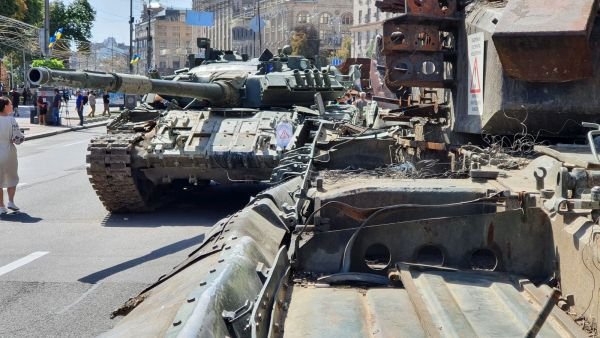
The “parade” from the Ukrainian Independence Day. All the wrecks were from Sumy. Photo: Jens Alstrup
The war did not completely end for Sumy with April’s siege lift. There have been almost daily attacks. Not a lot compared to other regions and almost never against the city itself but against small villages closer to the Russian border. There seems to be no other goal for them than keeping the Ukrainian defenders on alert. Bohdan’s work schedule is almost as it was before, and he is lucky to have his income stay the same, but he has trouble keeping focused. He is always nervous about receiving bad news. Putin has in no way given up conquering all of Ukraine. He has only redirected his efforts to a more important first goal.
The defence of Sumy has also changed. On my motorcycle journey from the Polish border to Kyiv, the checkpoints became more frequent. From Kyiv to Poltava, even more so, and from Poltava to Sumy, they were numerous. The idea of a Russian regiment crossing deep into Ukraine unnoticed seems to be something impossible now. The closer I got to Russia the bigger the checkpoints were and the more systematically travellers were inspected. From Poland to Poltava, people were only stopped at random. Closer to the border, there is a real defence present. All journalists are denied access to the actual frontline, active or not. I cannot say if it is a line of defence or clusters of defence, but the border is long, and strongpoints seem to be the logical solution. One thing is certain: the home defence that has proved itself effective in actual battles is ready for anything.
At the celebration of the city, 3 September, all officials were present: Oleksandr Lysenko, the mayor, Oleksandr Mordveniuk, chief of staff of the 15th Rifle Battalion and head of Sumy’s defence, Ihor Ganenko, who received a medal from the city, and others. Oleksandr Mordveniuk was calm in appearance, he confirmed the story. He also promised that if the Russian forces were to attack Sumy again, they were much more prepared and they would defend themselves.
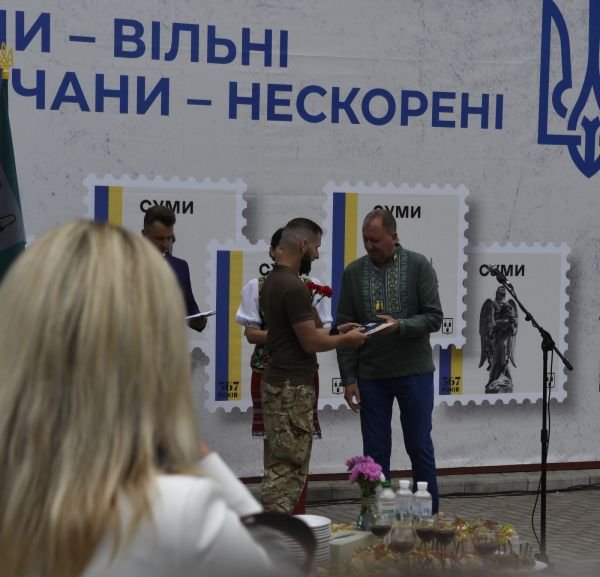
Ihor Ganenko gets his medal from the mayor. Photo: Jens Alstrup
Vova Bitsak is the head of the 3rd Battalion. These volunteer battalions joined together, and are now the cornerstone in the region, which frees up the regular army for direct battles with the Russian troops. Vova was active in the war from its first days and could prove that he also had experience with Javelins that are used against the Russian armoured vehicles. Javelins are one of the 4 wonders of the war in Ukraine. There are Javelins (anti-armour), Bayraktar (drones), HIMARS (missiles), and Patron (a dog that detects mines). The first checkpoint and stronghold I was shown was a school for new guards. By Western standards, it looked a little primitive, but for a guy like me, who has spent more than two years in total in Siberia, it was possible to look beyond that. The food in the fridge was homemade, but it was good, and I love homemade Ukrainian food. It served its purpose of feeding people, and the arms were kept in a dry place. What they may lack in offensive power they surely had in the defensive, and they have real battle experience from the siege.
As for the future, I must say that I admire the spirit of Ukrainians. Even though they are located very close to the Russian border, and Putin in no way has given up conquering all of Ukraine, there is a lot of work going on to repair roads, bridges, and other crucial infrastructure. Ukraine is a poor country, and it has been very severely hit by this war, but the determination to carry on and rebuild seems to be unshaken.

People here speak Russian, but they did not welcome Russian soldiers. “Russian soldier, go to hell”, the sign says. Photo: Jens Alstrup
There will be scars. Bohdan has problems concentrating. He can only do his job for so long before he has to check the news. There is always the fear that something horrible may come from the East. Ihor Ganenko was only 19 years old when the 2014 war started and that has basically been his life ever since. For him, there are new battles to be fought. As for the hatred against the Russians just on the other side of the border, I asked Oleksandr Mordveniuk about it. I could see that it was a difficult question for him to answer. He knew that I was representing a Russian media, and anything Russian is surely not popular these days in Ukraine, but he did say that, in the end, there are so many family relations between the people of Belgorod and Sumy, that sooner or later, the relationship between the cities will be rebuilt, but it may take a long time after the war. For now, there is a lot that cannot be forgiven. As a Dane with a grandfather (1892-1986) that hated Germans with every fibre in his body, I can understand it, but no matter the outcome of this war, Ukraine and Russia will still exist, as do Denmark and Germany, and we have very good relations today. But I will note that it took 100 years of active efforts on both sides to mend the fences. It will not be easy. We had a referendum in 1919 on our current border in Denmark. Ukraine had one in 1991. The one from 1919 has been respected by both parties. That is of course a big difference.
I promised, when the war was over, I would come back to Sumy. Hopefully soon.
Join us in rebuilding Novaya Gazeta Europe
The Russian government has banned independent media. We were forced to leave our country in order to keep doing our job, telling our readers about what is going on Russia, Ukraine and Europe.
We will continue fighting against warfare and dictatorship. We believe that freedom of speech is the most efficient antidote against tyranny. Support us financially to help us fight for peace and freedom.
By clicking the Support button, you agree to the processing of your personal data.
To cancel a regular donation, please write to [email protected]
